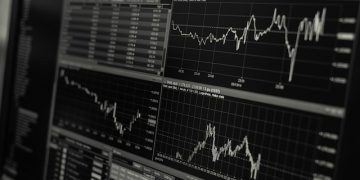CHAPEL HILL, N.C. — Rising interest rates will not be what sabotage this bull market.
That’s crucial information, since interest rates have risen significantly over the last six months, and especially over the last couple of weeks. The 10-year Treasury yield
TMUBMUSD10Y,
has more than doubled from where it stood last August, for example, from 0.52% to its current 1.20%. A big chunk of that increase—27 basis points—have come just since the beginning of the year.
I am revisiting this topic since many readers apparently weren’t convinced by my column earlier this month that there is no historical correlation between interest rates and stock-market returns.
SPX,
As some of you pointed out, that column focused on summary patterns that emerge when analyzing all data back to the 1920s. That is different than focusing on interest-rate trends at bull-market tops in particular. That’s what I am focusing on in this column.
Since 1962, which is how far back my database for the 10-year Treasury yield extends, there have been 17 bear markets, according to the calendar maintained by Ned Davis Research. In 10 of those 17 cases, the 10-year Treasury yield when those bear market began was actually lower than where it had stood three months prior. In other words, in more than half of the bear markets the 10-year yield had fallen over the last three months of the preceding bull markets.
You shouldn’t conclude from this result that a bear market can’t happen unless interest rates are declining, however. Notice that in seven of these 17 bear markets, interest rates rose over the three months preceding the beginnings of those bear markets. The appropriate conclusion to draw is that interest-rate trends are an unreliable guide to when bull markets will come to an end.
What about the Fed Funds rate?
This conclusion runs so counter to what we’re been repeatedly told over the years that I wanted to double-check it by focusing on the Federal Funds rate. This is the short-term rate that is directly set by the Federal Reserve’s Open Market Committee, and some analysts over the years have believed that it is the interest rate to which stock market investors should pay closest attention. According to Edson Gould’s famous “three steps and a stumble rule,” for example, the stock market will decline (“stumble”) after three consecutive interest rate hikes (“three steps”) from the Federal Reserve.
Gould, of course, was one of the most famous technical analysts of the 1960s and 1970s. Nevertheless, however much validity his rule may have had in prior decades, it hasn’t worked since the early 1980s. That’s when the Federal Reserve shifted its policy-setting stance to targeting the Fed Funds rate; before hat it focused on M1 money supply. At the top of seven of the nine bull markets since then, the most recent change in the Fed Funds rate was a cut—not an increase.
I have no idea whether the current bull market is close to an end. But I would note that the most recent move in the Federal Funds rate was last March, when the Fed cut it by a full percentage point.
The bottom line? Don’t look to interest rate trends for when the bull market will come to an end.
This doesn’t mean that happy days are here again, let me hasten to add. Just because rising interest rates are not the concern that many think them to be doesn’t mean there aren’t plenty of other worries. There most definitely are, with overvaluation at the top of the list.
Mark Hulbert is a regular contributor to MarketWatch. His Hulbert Ratings tracks investment newsletters that pay a flat fee to be audited. He can be reached at [email protected].




